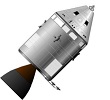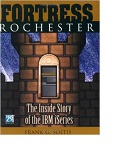 I have just released a new blog post on my Intel Developer Zone blog, about how Simics runs
I have just released a new blog post on my Intel Developer Zone blog, about how Simics runs large huge workloads. I look back at the kinds of workloads that ran on Simics back in 1998 when the product first went commercial, and then look at some current examples running on Simics. This is the first post in a series intended to celebrate 20 years of Simics as a commercial product.
Continue reading “Intel Blog Post: Running Large Workloads on Simics – in 1998 and 2018”

 A
A  Today, when developing embedded control systems, it is standard practice to test control algorithms against some kind of “world model”, “plant model” or “environment simulator”.
Today, when developing embedded control systems, it is standard practice to test control algorithms against some kind of “world model”, “plant model” or “environment simulator”. A comment on my
A comment on my 



